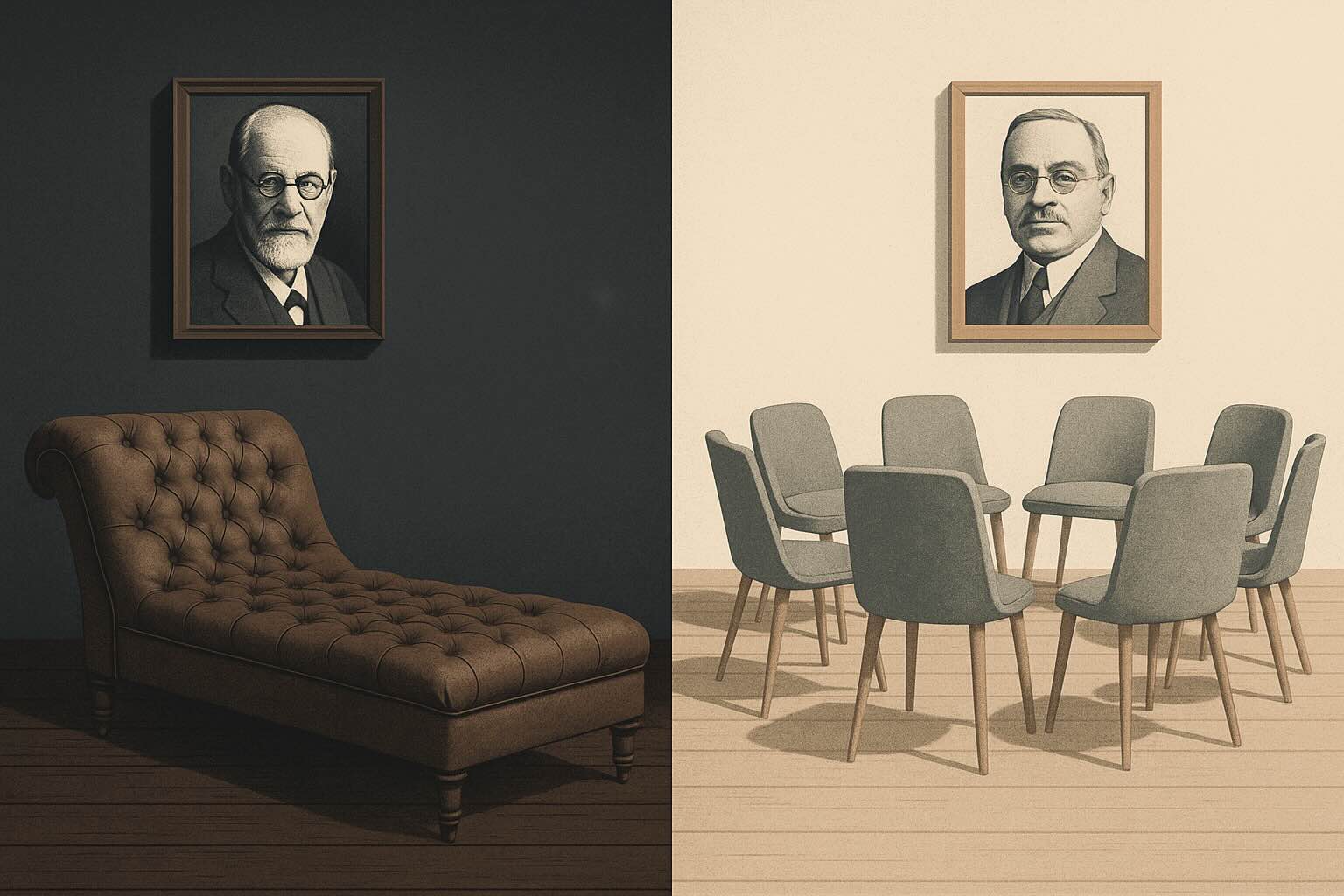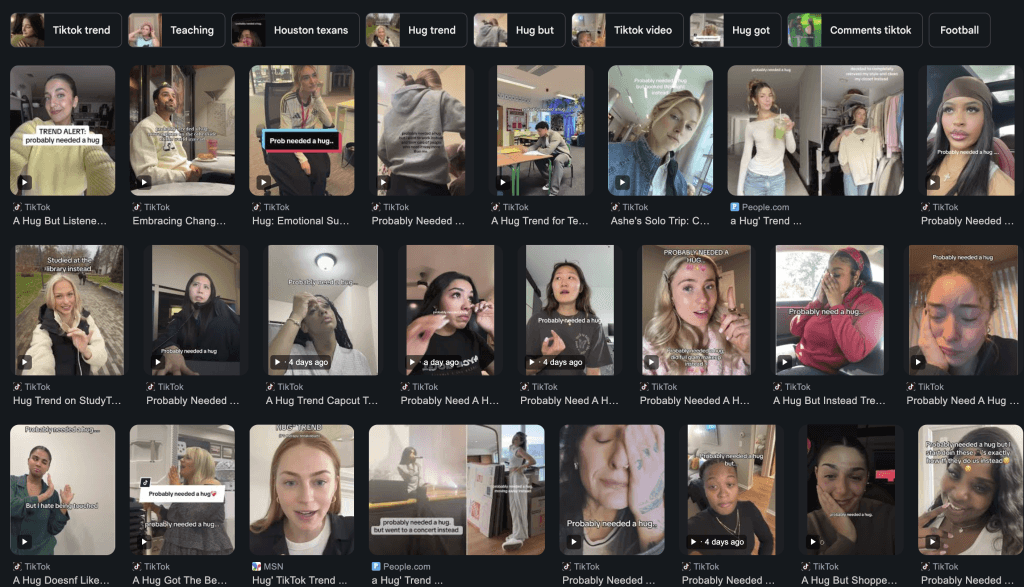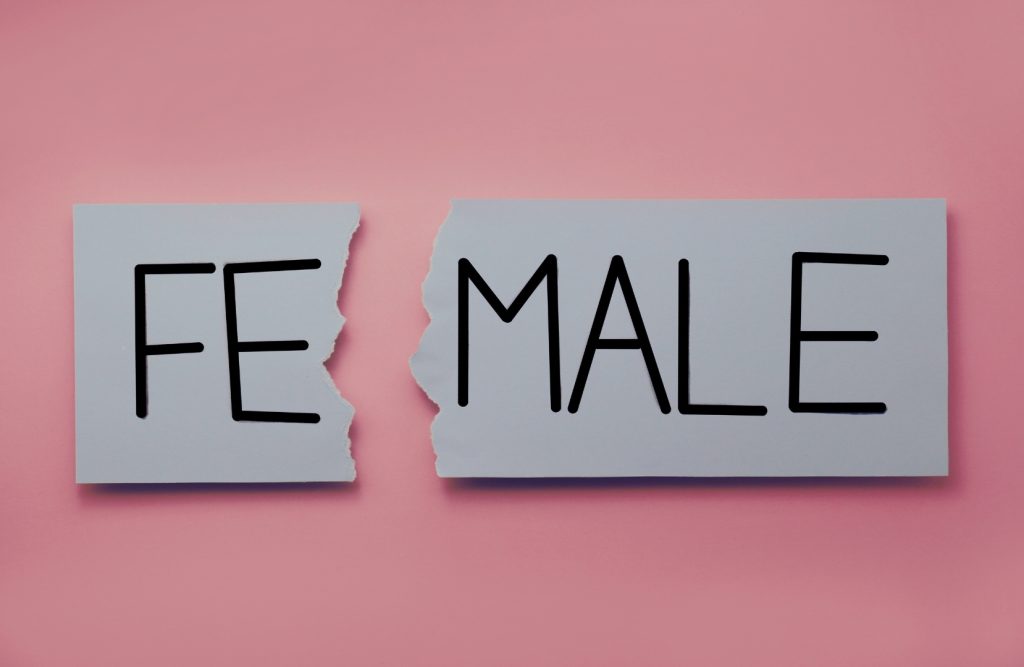Freud vs Adler therapy. Therapy still sounds like Freud, but many of us also need Adler.
Modern therapy traces much of its foundation back to two early thinkers: Sigmund Freud and Alfred Adler.
They started in the same room in early 20th century Vienna, but quickly took different paths. Freud became the face of psychoanalysis. Adler became the outlier.
Their split wasn’t just personal, it was philosophical. And the system we have today reflects who got institutionalized, and who got quietly set aside.
Freud vs Adler therapy: Freud – Inner Conflict, the Unconscious, and Long-Term Analysis
Freud believed behavior was shaped by unconscious desires, primarily around sex, aggression, and early childhood experience. His method, psychoanalysis focused on uncovering repressed conflict through long-term interpretation, free association, and dream analysis.
Core concepts:
The unconscious mind holds unresolved tension
Repressed instincts (especially sexual) drive behavior
Insight leads to healing
Therapy requires multiple sessions a week, often for years
System impact:
Gave rise to diagnosis-heavy clinical models
Compatible with medication, billing, and institutional practice
Emphasized the patient’s inner world, not social context
Freud vs Adler therapy: Adler – Social Connection, Meaning, and Encouragement
Adler rejected the idea that people are driven solely by instinct. He believed they’re motivated by a desire to feel seen, significant, and socially connected. When that fails, people develop inferiority complexes, overcompensate, or withdraw.
Core concepts:
People seek purpose, not just pleasure
Mental distress comes from discouragement, not repression
Healing comes from rebuilding belonging, agency, and contribution
Therapy should be short-term, relational, and action-focused
System impact:
Influenced education, coaching, parenting models, and early trauma intervention
Less compatible with traditional diagnosis or pharmaceutical treatment
Emphasized everyday relationships over internal archetypes
His influence quietly lives on in counseling, coaching, peer circles, and support groups—spaces that focus on encouragement, responsibility, and mutual respect
(Like support groups, which often carry Adlerian values even without naming them)

Why Freud’s Model Became the System
Freud’s ideas aligned well with how modern medicine was evolving: Structured. Clinical. Codified.
They were easier to standardize, and easier to bill. You could diagnose someone. Schedule repeat sessions. Prescribe medication.
It worked for institutions.
Adler’s model didn’t offer the same systematization. It was never meant to diagnose, its purpose was to encourage. It didn’t require years of therapy, just clarity of goals and connection.
The problem wasn’t that it failed to heal. The problem was that it didn’t fit the business model of healing.
What Gets Missed When One Model Dominates
Today, most mainstream therapy still follows Freud’s lineage, focusing on past trauma, unconscious behavior, and ongoing talk therapy. But this doesn’t work for everyone.
Some people do benefit from deep introspection and analysis. Others already know their patterns, and what they need isn’t more excavation, but encouragement. For some, long-term focus on pain can feel re-triggering rather than healing. For others, healing begins the moment they reconnect with community, purpose, or a sense of forward motion.
When the system scales only one framework, people who don’t respond to it often end up blaming themselves rather than questioning the model.
Closing Statements..
While Freud’s legacy dominates most therapy frameworks today, it’s worth asking: how did his become the default? Was it because his ideas worked best for most people or because they were easier to package into long-term treatment plans, academic curricula, and medicalized care? Adler’s model, by contrast, emphasized encouragement, future orientation, and social belonging, concepts that don’t always fit neatly into a clinical mold but resonate deeply with many lived experiences.
It’s not about pitting two thinkers against each other. It’s about realizing that mental health isn’t one-size-fits-all, and when only one model gets reinforced by the system, countless people get left behind, especially those who aren’t broken, just isolated, discouraged, or exhausted from trying to heal the “right” way.
Freud gave us language for the unconscious. Adler gave us tools for belonging and movement. One became the system. The other still works, just not where most people are looking.
References
Adler, A. (1937). Understanding human nature. Fawcett.
Boeree, C. G. (2006). Personality theories: Alfred Adler. Retrieved from http://webspace.ship.edu/cgboer/adler.html
Freud, S. (1923). The ego and the id. Standard Edition, 19, 12–66.
Freud, S. (1917). Introductory lectures on psychoanalysis. Norton.
Kerr, J. (1993). A most dangerous method: The story of Jung, Freud, and Sabina Spielrein. Vintage.
Ryckman, R. M. (2013). Theories of personality (10th ed.). Cengage Learning.
Woolfolk, R. L., & Wasserman, R. H. (2005). Countenancing Freud: A perspective on the Freud wars. The Journal of Mind and Behavior, 26(1), 1–18.
Keep Reading
If this article made something click, you might also want to read:
Support Groups – Healing Shouldn’t Be a Solo Mission
What Adler got right that the therapy industry ignored—and why we heal faster together.
Things We Wrote Instead of Going to Therapy
When journaling, memes, and half-sent emails become our emotional support system.
Your Nightmare Isn’t Just a Bad Dream, It’s a Message
What recurring dreams are trying to say and why your nervous system already knows.
Emotional Survival and Other Things We Don’t Admit Wanting
Before self-actualization, some of us are just trying to stay intact.
What Love and Sovereign Wealth Funds Have in Common
How we invest emotionally without knowing if the return is growth, loss, or a lesson.
The Male Loneliness Epidemic: Is Equality Killing Men or Was It Always This Empty?
The real roots of disconnection and why some systems benefit from keeping us isolated.







